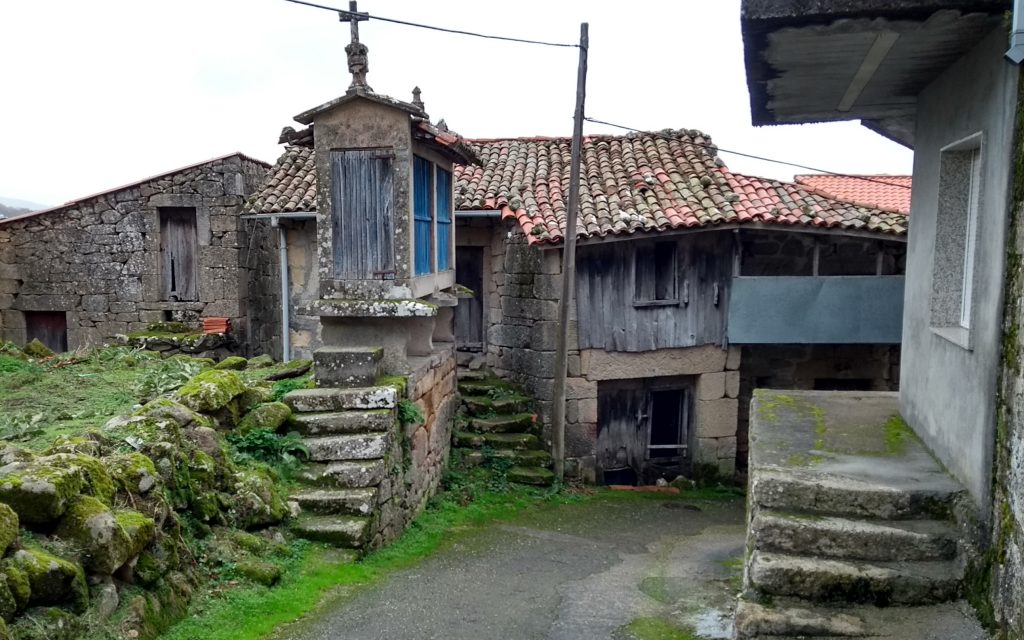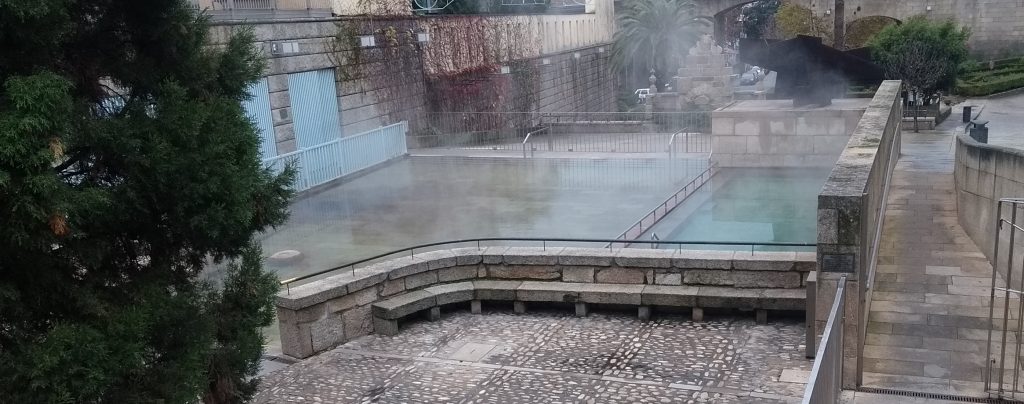
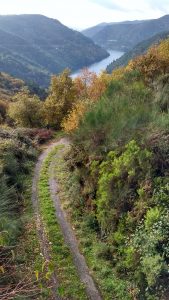
On Thursday the 13th of December we drove from Cudillero on the Asturian coast to Ourense — the scenery along the coast is spectacular at most times, but this day was foggy and rainy most of the way south to the Galician city of Ourense. So we couldn’t see the view very well and the most remarkable thing about the drive on the N-640 was a gas station we stopped at near San Tirso de Abres. Just a small service station with 2 pumps, but Teresa remarked that the women’s restroom was sparkling clean and the first time she had ever seen a gas station restroom equipped with a bidet.
As we neared Ourense, the clouds began to lift and we caught a good view of the Minho River valley as we descended the hills from Lugo – a city with an intact – and quite spectacular – city wall built by the Romans, and discussed in a posting from August 2017.
We found a Mexican restaurant near our AirBnB and had lunch while awaiting our appointment with the owner. We generally don’t get enough spice in our diets in Spain and often visit Mexican restaurants for that purpose. Very randomly, the waiter at this restaurant was familiar with the turkey production/processing industry in Minnesota and we had a nice chat with him. He advised us to check out the hot springs in town and then drive near the Cañón del Sil for a look at the heroic viticulture of D.O. Ribiera Sacra.
He asked which of the local liqueurs – herbal green, herbal gold or cafe – did we wish to end our meals with? As ignorant tourists, we didn’t know … and he gave us all three. These liqueurs are made from orujo – which is essentially the result of fermenting/distilling the grape pomace leftovers from winemaking. These liqueurs are offered by almost every Galician restaurant at the end of a meal.
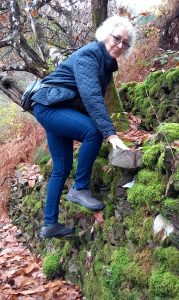
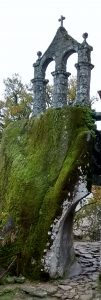
The Romans were attracted to this area by the hot springs and the gold nuggets in the Minho River which runs through town on its way to the Atlantic as the border between Portugal and Spain. The gold is all gone, but there are still a lot of hot springs and there are city fountains in the old part of town spouting hot water — as well as a free thermal spa. There are numerous other thermal spring/spas lining the river across from the old part of town — some free and others which charge a nominal fee.
Friday dawned overcast and misty — but we still decided on a road tour to have a look at Cañón del Sil. This gorge has some of the most spectacular scenery in Galicia. The steep, rugged, isolated territory was attractive to hermits some 1500 years ago and they began establishing monasteries. The first one recorded in the area, San Pedro de Rocas, was established at least by 573 AD. No longer an active monastery, it has a worthwhile little museum on the grounds detailing life on a monastery as well as ethnographic details of the surrounding area.
The monks – many of them imports from France – liked their wine, and soon started terracing the slopes to gain some soil for the vines. Most of the vineyards in this area are quite resistant to mechanization, and many of them are accessible only via the river. Most of the labor is truly of the backbreaking variety — so that’s why they call it “heroic viticulture“.
This area of Galicia was also known for sending its men out as traveling tradesmen specializing in such tasks as rope-making (cordeleros) and knife-grinding (afiladeros). The latter would sharpen all sorts of tools, as well as repair umbrellas. To announce their presence in an area, they blow on a very distinctive sounding whistle … check out the following video:
[youtube https://www.youtube.com/watch?v=TiE9Ujr7mrI&w=640]
The knife-grinders even developed their own language which they used when traveling about … Barallete … to keep their conversations more private. There are still a few afiladeros to be found — most of them now use motor scooters or bicycles to get around.
Our last day in Ourense we spent visiting the wine town of Ribadavia and the hot springs across the river from Ourense – Outariz. This one has an entry fee of a few euros, but is a really nice place to go on a rainy Saturday.
